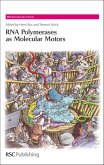- Gebundenes Buch
- Merkliste
- Auf die Merkliste
- Bewerten Bewerten
- Teilen
- Produkt teilen
- Produkterinnerung
- Produkterinnerung
This book is a valuable resource for practitioners working in the field, and offers a comprehensive introduction for graduate and post graduates
Andere Kunden interessierten sich auch für
![Interfacial Rheology Interfacial Rheology]() Interfacial Rheology66,99 €
Interfacial Rheology66,99 €![Maths for Chemists Maths for Chemists]() Graham DoggettMaths for Chemists39,99 €
Graham DoggettMaths for Chemists39,99 €![Chromic Phenomena Chromic Phenomena]() Peter BamfieldChromic Phenomena266,99 €
Peter BamfieldChromic Phenomena266,99 €![Chemical Kinetics and Mechanism Chemical Kinetics and Mechanism]() MortimerChemical Kinetics and Mechanism35,99 €
MortimerChemical Kinetics and Mechanism35,99 €![Chemical Vapour Deposition Chemical Vapour Deposition]() Chemical Vapour Deposition262,99 €
Chemical Vapour Deposition262,99 €![RNA Polymerases as Molecular Motors RNA Polymerases as Molecular Motors]() RNA Polymerases as Molecular Motors194,99 €
RNA Polymerases as Molecular Motors194,99 €![Quantities, Units and Symbols in Physical Chemistry Quantities, Units and Symbols in Physical Chemistry]() Quantities, Units and Symbols in Physical Chemistry47,99 €
Quantities, Units and Symbols in Physical Chemistry47,99 €-
-
-
This book is a valuable resource for practitioners working in the field, and offers a comprehensive introduction for graduate and post graduates
Hinweis: Dieser Artikel kann nur an eine deutsche Lieferadresse ausgeliefert werden.
Hinweis: Dieser Artikel kann nur an eine deutsche Lieferadresse ausgeliefert werden.
Produktdetails
- Produktdetails
- Verlag: Royal Society of Chemistry
- 2 ed
- Seitenzahl: 276
- Erscheinungstermin: 22. Januar 2008
- Englisch
- Abmessung: 236mm x 155mm x 20mm
- Gewicht: 572g
- ISBN-13: 9780854048397
- ISBN-10: 0854048391
- Artikelnr.: 24601682
- Herstellerkennzeichnung
- Libri GmbH
- Europaallee 1
- 36244 Bad Hersfeld
- gpsr@libri.de
- Verlag: Royal Society of Chemistry
- 2 ed
- Seitenzahl: 276
- Erscheinungstermin: 22. Januar 2008
- Englisch
- Abmessung: 236mm x 155mm x 20mm
- Gewicht: 572g
- ISBN-13: 9780854048397
- ISBN-10: 0854048391
- Artikelnr.: 24601682
- Herstellerkennzeichnung
- Libri GmbH
- Europaallee 1
- 36244 Bad Hersfeld
- gpsr@libri.de
Contents: Chapter 1: Introduction
1.1 Definitions
1.1.1 Stress and Strain
1.1.2 Rate of Strain and Flow
1.2 Simple Constitutive Equations
1.2.1 Linear and Non-linear Behaviour
1.2.2 Using Constitutive Equations
1.3 Dimensionless Groups
1.3.1 The Deborah Number
1.3.2 The PÚclet Number
1.3.3 The Reduced Stress
1.3.4 The Taylor Number, NTa
1.3.5 The Reynolds Number, NRe
1.4 Macromolecular and Colloidal Systems
1.5 References
Chapter 2: Elasticity: High Deborah Number Measurements
2.1 Introduction
2.2 The Liquid-Solid Transition
2.2.1 Bulk Elasticity
2.2.2 Wave Propagation
2.3 Crystalline Solids At Large Strains
2.3.1 Lattice Defects
2.4 Macromolecular Solids
2.4.1 Polymers - An Introduction
2.4.2 Chain Conformation
2.4.3 Polymer Crystallinity
2.4.4 Crosslinked Elastomers
2.4.5 Self-associating Polymers
2.4.6 Non-interactive Fillers
2.4.7 Interactive Fillers
2.4.8 Summary of Polymeric Systems
2.5 Colloidal Gels
2.5.1 Interactions Between Colloidal Particles
2.5.2 London - van der Waals' Interactions
2.5.3 Depletion Interactions
2.5.4 Electrostatic Repulsion
2.5.5 Steric Repulsion
2.5.6 Electrosteric Interactions
2.6 References
Chapter 3: Viscosity: Low Deborah Number Measurements
3.1 Initial Considerations
3.2 Viscometric Measurement
3.2.1 The Cone and Plate
3.2.2 The Couette or Concentric Cylinder
3.3 The Molecular Origins on Viscosity
3.3.1 The Flow of Gases
3.3.2 The Flow of Liquids
3.3.3 Density and Phase Changes
3.3.4 Free Volume Model of Liquid Flow
3.3.5 Activation energy Models
3.4 Superfluids
3.5 Macromolecular Fluids
3.5.1 Colloidal Dispersions
3.5.2 Dilute Dispersions of Spheres
3.5.3 Concentrated Dispersions of Spheres
3.5.4 Shear Thickening Behaviour in Dense Suspensions
3.5.5 Charge Stabilised Dispersions
3.5.6 Dilute Polymer Solutions
3.5.7 Surfactant Solutions
3.6 References
Chapter 4: Linear Viscoelasticity I Phenomenological Approach
4.1 Viscoelasticity
4.2 Length and Timescales
4.3 Mechanical Spectroscopy
4.4 Linear Viscoelasticity
4.4.1 Mechanical Analogues
4.4.2 Relaxation Derived as an Analogue to 1 st Order Chemical Kinetics
4.4.1 Oscillation Response
4.4.2 Multiple Processes
4.4.3 A Spectral Approach To Linear Viscoelastic Theory
4.5 Linear Viscoelastic Experiments
4.4.1 Relaxation
4.4.2 Stress Growth
4.4.3 Antthixotropic Response
4.4.4 Creep and Recovery
4.4.5 Strain Oscillation
4.4.6 Stress Oscillation
4.6 Interrelationships Between the Measurements and the Spectra
4.6.1 The Relationship Between Compliance and Modulus
4.6.1 Retardation and Relaxation Spectrum
4.6.2 The Relaxation Function and the Storage and Loss Moduli
4.6.3 Creep and Relaxation Interrelations
4.7 Applications to the Models
4.8 Microstructural Influences on the Kernel
4.8.1 The Extended Exponential
4.8.2 Power law or the Gel Equation
4.8.3 Exact Inversions from the Relaxation or Retardation Spectrum
4.9 Non-shearing Fields and Extension
4.10 References
Chapter 5: Linear Viscoelasticity II. Microstructural Approach
5.1 Intermediate Deborah Numbers
5.2 Hard Spheres and Atomic Fluids
5.3 Quasi-hard Spheres
5.3.1 Quasi-hard Sphere Phase Diagrams
5.3.2 Quasi-hard Sphere Viscoelasticity and Viscosity
5.4 Weakly Attractive Systems
5.5 Charge Repulsion Systems
5.6 Simple Homopolymer systems
5.6.1 Phase Behaviour and the Chain Overlap in Good Solvents
5.6.2 Dilute Solution Polymers
5.6.3 Undiluted and Concentrated Non-entangled Polymers
5.6.4 Entanglement coupling
5.6.5 Reptation and Linear Viscoelasticity
5.7 Polymer Network Structure
5.7.1 The Formation of Gels
5.7.2 Chemical Networks
5.7.3 Physical Networks
5.8 References
Chapter 6: Non-Linear Responses
6.1 Introduction
6.2 The Phenomenological Approach
6.2.1 Flow Curve4s
Definitions and Equations
6.2.2 Time Dependence in Flow and The Boltzmann Superposition Principle
6.2.3 Yield Stress Sedimentation and Linearity
6.3 The Microstructural Approach - Particles
6.2.1 Flow in Hard Sphere Systems
6.2.2 The Addition of a Surface Layer
6.2.3 Aggregation and Dispersion in Shear
6.2.4 Weakly Flocculated Dispersions
6.2.5 Strongly Aggregated and Coagulated Systems
6.2.6 Long Range Repulsive Systems
6.2.7 Rod-like Particles
6.4 The Microstructural Approach - Polymers
6.4.1 The Role of Entanglements in Non-linear Viscoelasticity
6.4.2 Entanglements of Solution Homopolymers
6.4.3 The Reptation Approach
6.5 Novel Applications
6.5.1 Extension and Complex Flows
6.5.2 Uniaxial Compression Modulus
6.5.3 Deformable Particles
6.5 References
Subject Index
1.1 Definitions
1.1.1 Stress and Strain
1.1.2 Rate of Strain and Flow
1.2 Simple Constitutive Equations
1.2.1 Linear and Non-linear Behaviour
1.2.2 Using Constitutive Equations
1.3 Dimensionless Groups
1.3.1 The Deborah Number
1.3.2 The PÚclet Number
1.3.3 The Reduced Stress
1.3.4 The Taylor Number, NTa
1.3.5 The Reynolds Number, NRe
1.4 Macromolecular and Colloidal Systems
1.5 References
Chapter 2: Elasticity: High Deborah Number Measurements
2.1 Introduction
2.2 The Liquid-Solid Transition
2.2.1 Bulk Elasticity
2.2.2 Wave Propagation
2.3 Crystalline Solids At Large Strains
2.3.1 Lattice Defects
2.4 Macromolecular Solids
2.4.1 Polymers - An Introduction
2.4.2 Chain Conformation
2.4.3 Polymer Crystallinity
2.4.4 Crosslinked Elastomers
2.4.5 Self-associating Polymers
2.4.6 Non-interactive Fillers
2.4.7 Interactive Fillers
2.4.8 Summary of Polymeric Systems
2.5 Colloidal Gels
2.5.1 Interactions Between Colloidal Particles
2.5.2 London - van der Waals' Interactions
2.5.3 Depletion Interactions
2.5.4 Electrostatic Repulsion
2.5.5 Steric Repulsion
2.5.6 Electrosteric Interactions
2.6 References
Chapter 3: Viscosity: Low Deborah Number Measurements
3.1 Initial Considerations
3.2 Viscometric Measurement
3.2.1 The Cone and Plate
3.2.2 The Couette or Concentric Cylinder
3.3 The Molecular Origins on Viscosity
3.3.1 The Flow of Gases
3.3.2 The Flow of Liquids
3.3.3 Density and Phase Changes
3.3.4 Free Volume Model of Liquid Flow
3.3.5 Activation energy Models
3.4 Superfluids
3.5 Macromolecular Fluids
3.5.1 Colloidal Dispersions
3.5.2 Dilute Dispersions of Spheres
3.5.3 Concentrated Dispersions of Spheres
3.5.4 Shear Thickening Behaviour in Dense Suspensions
3.5.5 Charge Stabilised Dispersions
3.5.6 Dilute Polymer Solutions
3.5.7 Surfactant Solutions
3.6 References
Chapter 4: Linear Viscoelasticity I Phenomenological Approach
4.1 Viscoelasticity
4.2 Length and Timescales
4.3 Mechanical Spectroscopy
4.4 Linear Viscoelasticity
4.4.1 Mechanical Analogues
4.4.2 Relaxation Derived as an Analogue to 1 st Order Chemical Kinetics
4.4.1 Oscillation Response
4.4.2 Multiple Processes
4.4.3 A Spectral Approach To Linear Viscoelastic Theory
4.5 Linear Viscoelastic Experiments
4.4.1 Relaxation
4.4.2 Stress Growth
4.4.3 Antthixotropic Response
4.4.4 Creep and Recovery
4.4.5 Strain Oscillation
4.4.6 Stress Oscillation
4.6 Interrelationships Between the Measurements and the Spectra
4.6.1 The Relationship Between Compliance and Modulus
4.6.1 Retardation and Relaxation Spectrum
4.6.2 The Relaxation Function and the Storage and Loss Moduli
4.6.3 Creep and Relaxation Interrelations
4.7 Applications to the Models
4.8 Microstructural Influences on the Kernel
4.8.1 The Extended Exponential
4.8.2 Power law or the Gel Equation
4.8.3 Exact Inversions from the Relaxation or Retardation Spectrum
4.9 Non-shearing Fields and Extension
4.10 References
Chapter 5: Linear Viscoelasticity II. Microstructural Approach
5.1 Intermediate Deborah Numbers
5.2 Hard Spheres and Atomic Fluids
5.3 Quasi-hard Spheres
5.3.1 Quasi-hard Sphere Phase Diagrams
5.3.2 Quasi-hard Sphere Viscoelasticity and Viscosity
5.4 Weakly Attractive Systems
5.5 Charge Repulsion Systems
5.6 Simple Homopolymer systems
5.6.1 Phase Behaviour and the Chain Overlap in Good Solvents
5.6.2 Dilute Solution Polymers
5.6.3 Undiluted and Concentrated Non-entangled Polymers
5.6.4 Entanglement coupling
5.6.5 Reptation and Linear Viscoelasticity
5.7 Polymer Network Structure
5.7.1 The Formation of Gels
5.7.2 Chemical Networks
5.7.3 Physical Networks
5.8 References
Chapter 6: Non-Linear Responses
6.1 Introduction
6.2 The Phenomenological Approach
6.2.1 Flow Curve4s
Definitions and Equations
6.2.2 Time Dependence in Flow and The Boltzmann Superposition Principle
6.2.3 Yield Stress Sedimentation and Linearity
6.3 The Microstructural Approach - Particles
6.2.1 Flow in Hard Sphere Systems
6.2.2 The Addition of a Surface Layer
6.2.3 Aggregation and Dispersion in Shear
6.2.4 Weakly Flocculated Dispersions
6.2.5 Strongly Aggregated and Coagulated Systems
6.2.6 Long Range Repulsive Systems
6.2.7 Rod-like Particles
6.4 The Microstructural Approach - Polymers
6.4.1 The Role of Entanglements in Non-linear Viscoelasticity
6.4.2 Entanglements of Solution Homopolymers
6.4.3 The Reptation Approach
6.5 Novel Applications
6.5.1 Extension and Complex Flows
6.5.2 Uniaxial Compression Modulus
6.5.3 Deformable Particles
6.5 References
Subject Index
Contents: Chapter 1: Introduction
1.1 Definitions
1.1.1 Stress and Strain
1.1.2 Rate of Strain and Flow
1.2 Simple Constitutive Equations
1.2.1 Linear and Non-linear Behaviour
1.2.2 Using Constitutive Equations
1.3 Dimensionless Groups
1.3.1 The Deborah Number
1.3.2 The PÚclet Number
1.3.3 The Reduced Stress
1.3.4 The Taylor Number, NTa
1.3.5 The Reynolds Number, NRe
1.4 Macromolecular and Colloidal Systems
1.5 References
Chapter 2: Elasticity: High Deborah Number Measurements
2.1 Introduction
2.2 The Liquid-Solid Transition
2.2.1 Bulk Elasticity
2.2.2 Wave Propagation
2.3 Crystalline Solids At Large Strains
2.3.1 Lattice Defects
2.4 Macromolecular Solids
2.4.1 Polymers - An Introduction
2.4.2 Chain Conformation
2.4.3 Polymer Crystallinity
2.4.4 Crosslinked Elastomers
2.4.5 Self-associating Polymers
2.4.6 Non-interactive Fillers
2.4.7 Interactive Fillers
2.4.8 Summary of Polymeric Systems
2.5 Colloidal Gels
2.5.1 Interactions Between Colloidal Particles
2.5.2 London - van der Waals' Interactions
2.5.3 Depletion Interactions
2.5.4 Electrostatic Repulsion
2.5.5 Steric Repulsion
2.5.6 Electrosteric Interactions
2.6 References
Chapter 3: Viscosity: Low Deborah Number Measurements
3.1 Initial Considerations
3.2 Viscometric Measurement
3.2.1 The Cone and Plate
3.2.2 The Couette or Concentric Cylinder
3.3 The Molecular Origins on Viscosity
3.3.1 The Flow of Gases
3.3.2 The Flow of Liquids
3.3.3 Density and Phase Changes
3.3.4 Free Volume Model of Liquid Flow
3.3.5 Activation energy Models
3.4 Superfluids
3.5 Macromolecular Fluids
3.5.1 Colloidal Dispersions
3.5.2 Dilute Dispersions of Spheres
3.5.3 Concentrated Dispersions of Spheres
3.5.4 Shear Thickening Behaviour in Dense Suspensions
3.5.5 Charge Stabilised Dispersions
3.5.6 Dilute Polymer Solutions
3.5.7 Surfactant Solutions
3.6 References
Chapter 4: Linear Viscoelasticity I Phenomenological Approach
4.1 Viscoelasticity
4.2 Length and Timescales
4.3 Mechanical Spectroscopy
4.4 Linear Viscoelasticity
4.4.1 Mechanical Analogues
4.4.2 Relaxation Derived as an Analogue to 1 st Order Chemical Kinetics
4.4.1 Oscillation Response
4.4.2 Multiple Processes
4.4.3 A Spectral Approach To Linear Viscoelastic Theory
4.5 Linear Viscoelastic Experiments
4.4.1 Relaxation
4.4.2 Stress Growth
4.4.3 Antthixotropic Response
4.4.4 Creep and Recovery
4.4.5 Strain Oscillation
4.4.6 Stress Oscillation
4.6 Interrelationships Between the Measurements and the Spectra
4.6.1 The Relationship Between Compliance and Modulus
4.6.1 Retardation and Relaxation Spectrum
4.6.2 The Relaxation Function and the Storage and Loss Moduli
4.6.3 Creep and Relaxation Interrelations
4.7 Applications to the Models
4.8 Microstructural Influences on the Kernel
4.8.1 The Extended Exponential
4.8.2 Power law or the Gel Equation
4.8.3 Exact Inversions from the Relaxation or Retardation Spectrum
4.9 Non-shearing Fields and Extension
4.10 References
Chapter 5: Linear Viscoelasticity II. Microstructural Approach
5.1 Intermediate Deborah Numbers
5.2 Hard Spheres and Atomic Fluids
5.3 Quasi-hard Spheres
5.3.1 Quasi-hard Sphere Phase Diagrams
5.3.2 Quasi-hard Sphere Viscoelasticity and Viscosity
5.4 Weakly Attractive Systems
5.5 Charge Repulsion Systems
5.6 Simple Homopolymer systems
5.6.1 Phase Behaviour and the Chain Overlap in Good Solvents
5.6.2 Dilute Solution Polymers
5.6.3 Undiluted and Concentrated Non-entangled Polymers
5.6.4 Entanglement coupling
5.6.5 Reptation and Linear Viscoelasticity
5.7 Polymer Network Structure
5.7.1 The Formation of Gels
5.7.2 Chemical Networks
5.7.3 Physical Networks
5.8 References
Chapter 6: Non-Linear Responses
6.1 Introduction
6.2 The Phenomenological Approach
6.2.1 Flow Curve4s
Definitions and Equations
6.2.2 Time Dependence in Flow and The Boltzmann Superposition Principle
6.2.3 Yield Stress Sedimentation and Linearity
6.3 The Microstructural Approach - Particles
6.2.1 Flow in Hard Sphere Systems
6.2.2 The Addition of a Surface Layer
6.2.3 Aggregation and Dispersion in Shear
6.2.4 Weakly Flocculated Dispersions
6.2.5 Strongly Aggregated and Coagulated Systems
6.2.6 Long Range Repulsive Systems
6.2.7 Rod-like Particles
6.4 The Microstructural Approach - Polymers
6.4.1 The Role of Entanglements in Non-linear Viscoelasticity
6.4.2 Entanglements of Solution Homopolymers
6.4.3 The Reptation Approach
6.5 Novel Applications
6.5.1 Extension and Complex Flows
6.5.2 Uniaxial Compression Modulus
6.5.3 Deformable Particles
6.5 References
Subject Index
1.1 Definitions
1.1.1 Stress and Strain
1.1.2 Rate of Strain and Flow
1.2 Simple Constitutive Equations
1.2.1 Linear and Non-linear Behaviour
1.2.2 Using Constitutive Equations
1.3 Dimensionless Groups
1.3.1 The Deborah Number
1.3.2 The PÚclet Number
1.3.3 The Reduced Stress
1.3.4 The Taylor Number, NTa
1.3.5 The Reynolds Number, NRe
1.4 Macromolecular and Colloidal Systems
1.5 References
Chapter 2: Elasticity: High Deborah Number Measurements
2.1 Introduction
2.2 The Liquid-Solid Transition
2.2.1 Bulk Elasticity
2.2.2 Wave Propagation
2.3 Crystalline Solids At Large Strains
2.3.1 Lattice Defects
2.4 Macromolecular Solids
2.4.1 Polymers - An Introduction
2.4.2 Chain Conformation
2.4.3 Polymer Crystallinity
2.4.4 Crosslinked Elastomers
2.4.5 Self-associating Polymers
2.4.6 Non-interactive Fillers
2.4.7 Interactive Fillers
2.4.8 Summary of Polymeric Systems
2.5 Colloidal Gels
2.5.1 Interactions Between Colloidal Particles
2.5.2 London - van der Waals' Interactions
2.5.3 Depletion Interactions
2.5.4 Electrostatic Repulsion
2.5.5 Steric Repulsion
2.5.6 Electrosteric Interactions
2.6 References
Chapter 3: Viscosity: Low Deborah Number Measurements
3.1 Initial Considerations
3.2 Viscometric Measurement
3.2.1 The Cone and Plate
3.2.2 The Couette or Concentric Cylinder
3.3 The Molecular Origins on Viscosity
3.3.1 The Flow of Gases
3.3.2 The Flow of Liquids
3.3.3 Density and Phase Changes
3.3.4 Free Volume Model of Liquid Flow
3.3.5 Activation energy Models
3.4 Superfluids
3.5 Macromolecular Fluids
3.5.1 Colloidal Dispersions
3.5.2 Dilute Dispersions of Spheres
3.5.3 Concentrated Dispersions of Spheres
3.5.4 Shear Thickening Behaviour in Dense Suspensions
3.5.5 Charge Stabilised Dispersions
3.5.6 Dilute Polymer Solutions
3.5.7 Surfactant Solutions
3.6 References
Chapter 4: Linear Viscoelasticity I Phenomenological Approach
4.1 Viscoelasticity
4.2 Length and Timescales
4.3 Mechanical Spectroscopy
4.4 Linear Viscoelasticity
4.4.1 Mechanical Analogues
4.4.2 Relaxation Derived as an Analogue to 1 st Order Chemical Kinetics
4.4.1 Oscillation Response
4.4.2 Multiple Processes
4.4.3 A Spectral Approach To Linear Viscoelastic Theory
4.5 Linear Viscoelastic Experiments
4.4.1 Relaxation
4.4.2 Stress Growth
4.4.3 Antthixotropic Response
4.4.4 Creep and Recovery
4.4.5 Strain Oscillation
4.4.6 Stress Oscillation
4.6 Interrelationships Between the Measurements and the Spectra
4.6.1 The Relationship Between Compliance and Modulus
4.6.1 Retardation and Relaxation Spectrum
4.6.2 The Relaxation Function and the Storage and Loss Moduli
4.6.3 Creep and Relaxation Interrelations
4.7 Applications to the Models
4.8 Microstructural Influences on the Kernel
4.8.1 The Extended Exponential
4.8.2 Power law or the Gel Equation
4.8.3 Exact Inversions from the Relaxation or Retardation Spectrum
4.9 Non-shearing Fields and Extension
4.10 References
Chapter 5: Linear Viscoelasticity II. Microstructural Approach
5.1 Intermediate Deborah Numbers
5.2 Hard Spheres and Atomic Fluids
5.3 Quasi-hard Spheres
5.3.1 Quasi-hard Sphere Phase Diagrams
5.3.2 Quasi-hard Sphere Viscoelasticity and Viscosity
5.4 Weakly Attractive Systems
5.5 Charge Repulsion Systems
5.6 Simple Homopolymer systems
5.6.1 Phase Behaviour and the Chain Overlap in Good Solvents
5.6.2 Dilute Solution Polymers
5.6.3 Undiluted and Concentrated Non-entangled Polymers
5.6.4 Entanglement coupling
5.6.5 Reptation and Linear Viscoelasticity
5.7 Polymer Network Structure
5.7.1 The Formation of Gels
5.7.2 Chemical Networks
5.7.3 Physical Networks
5.8 References
Chapter 6: Non-Linear Responses
6.1 Introduction
6.2 The Phenomenological Approach
6.2.1 Flow Curve4s
Definitions and Equations
6.2.2 Time Dependence in Flow and The Boltzmann Superposition Principle
6.2.3 Yield Stress Sedimentation and Linearity
6.3 The Microstructural Approach - Particles
6.2.1 Flow in Hard Sphere Systems
6.2.2 The Addition of a Surface Layer
6.2.3 Aggregation and Dispersion in Shear
6.2.4 Weakly Flocculated Dispersions
6.2.5 Strongly Aggregated and Coagulated Systems
6.2.6 Long Range Repulsive Systems
6.2.7 Rod-like Particles
6.4 The Microstructural Approach - Polymers
6.4.1 The Role of Entanglements in Non-linear Viscoelasticity
6.4.2 Entanglements of Solution Homopolymers
6.4.3 The Reptation Approach
6.5 Novel Applications
6.5.1 Extension and Complex Flows
6.5.2 Uniaxial Compression Modulus
6.5.3 Deformable Particles
6.5 References
Subject Index









